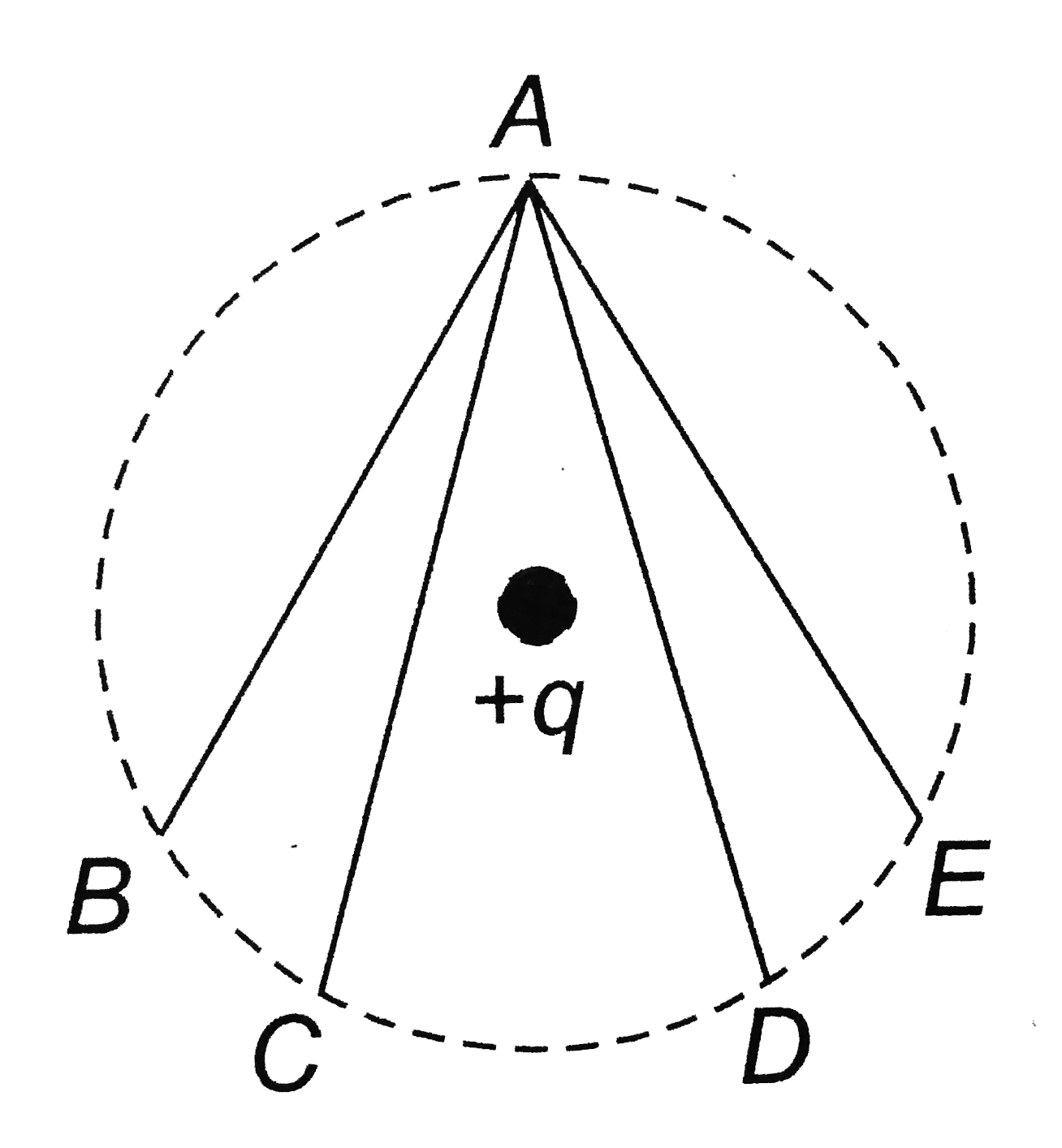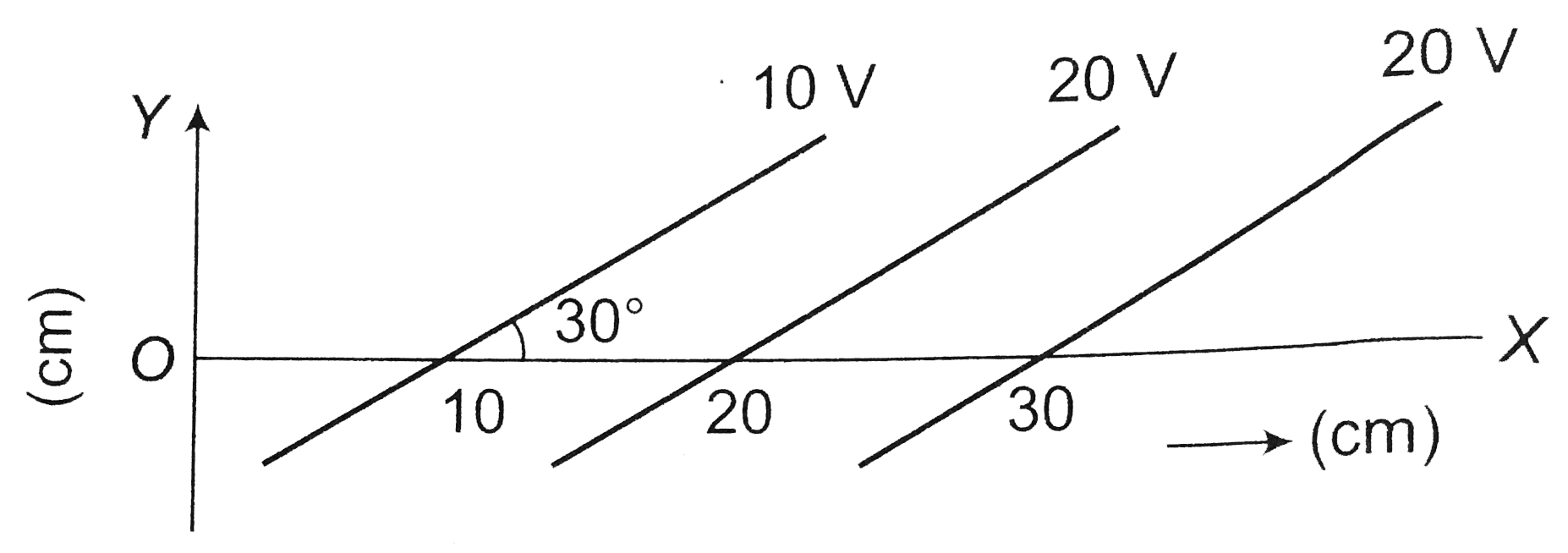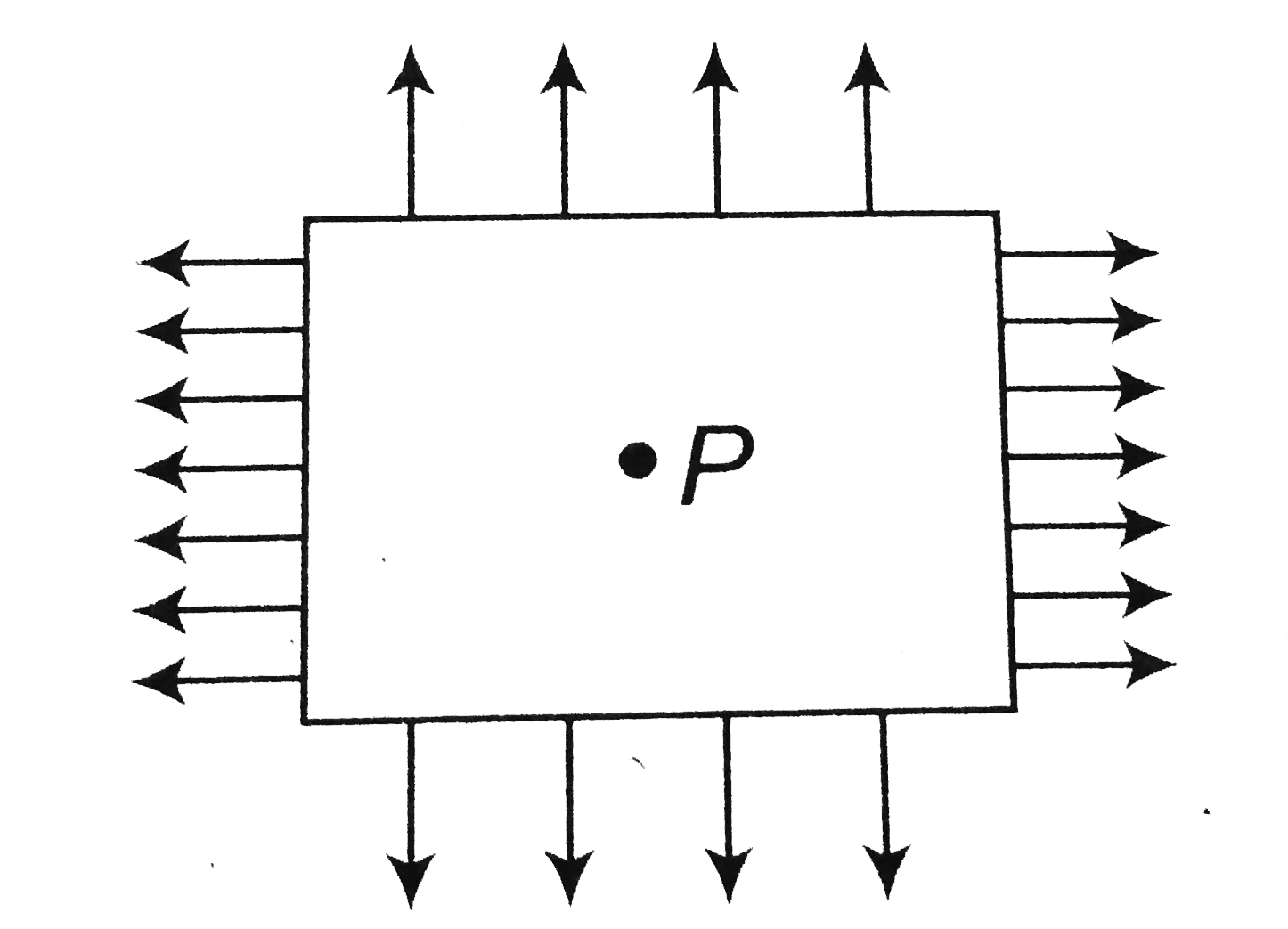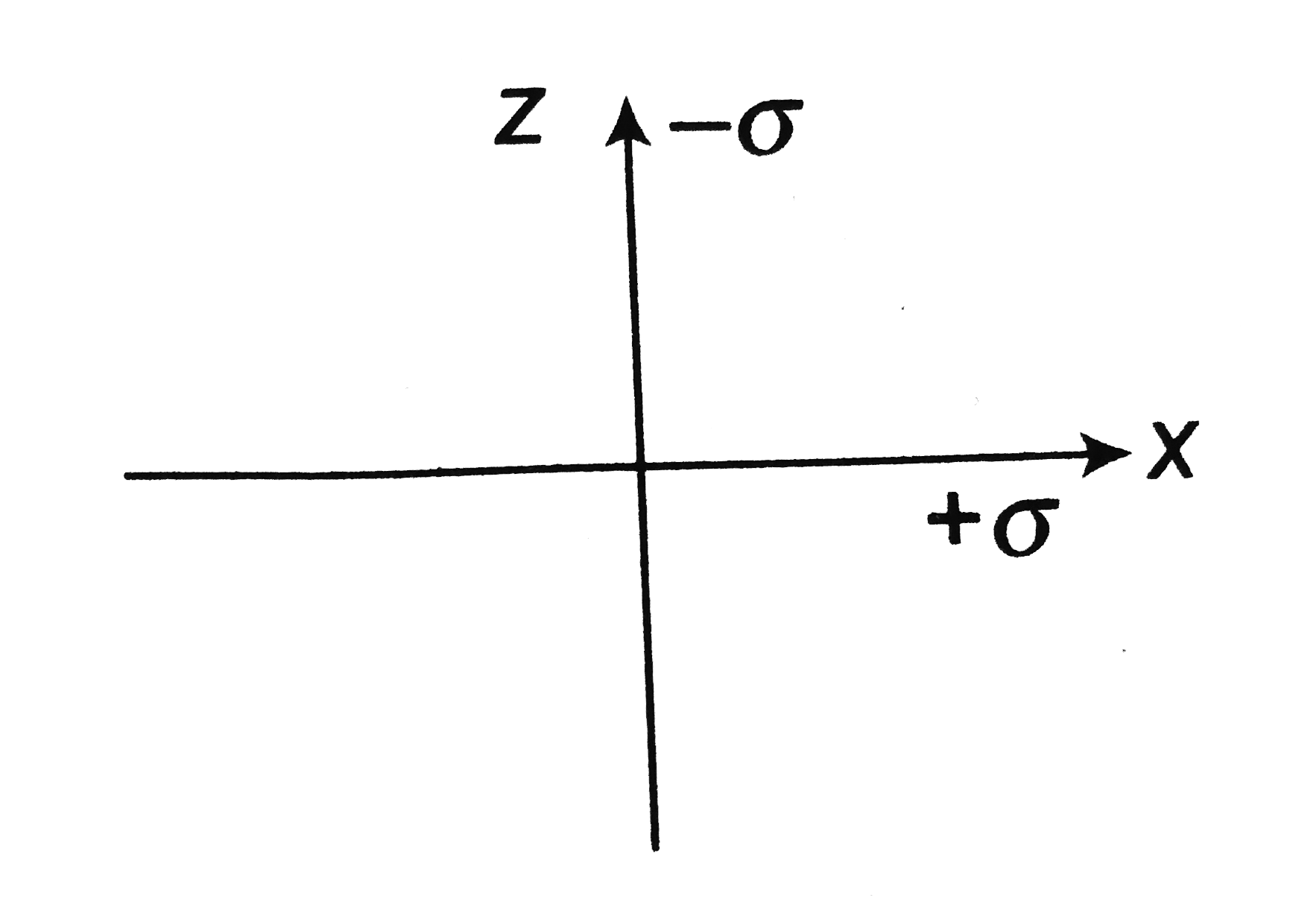Complete Solutions to DPP 3.3 of chapter ELECTRIC POTENTIAL of Class 12 book with complete answers and questions
| Class 12 | PHYSICS |
| Chapter | ELECTRIC POTENTIAL |
| CENGAGE PHYSICS DPP | DPP 3.3 |
| Number Of Questions | 20 |
| Academic Year | 2023-24 |
Two metal spheres, one fo radius R and the other of radius 2R, both have same surface charge density s. They are brought in contact and seprated. What will be new surface charge densitites on them ?
View SolutionTwo charges `q_(1) and q_(2)` are placed at `(0,0d) and (0,0-d)` respectively. Find locus of points where the potential is zero.
View SolutionEquipotentials at a great distance from a collection of charges whose total sum is not zero are approximately
View SolutionFigure shows some equipotential lines distributed in space. A charged object is moved from point `A` to point `5`.

View SolutionIn the electric field of a point chargde `q`, a cetrain charge is carried from point `A` to `B, C, D` and `E`. Then the ork done

View SolutionEluipotential surfcaces are shown in figure. Then the electric field strength will be

View SolutionIn moving from A to B along an electric field line, the work done by the electric field on an electron is `6.4 xx 10^-19 J`. If `phi_1 and phi_2` are equipotential surfaces, then the potential difference `V_C - V_A ` is.
 .
.
View SolutionElectric lines of force are as shown in the figure. Then potential at point `P`

View SolutionTwo infinitely large charged planes having uniform suface charge density `+sigma` and `-sigma` are placed along `x-y` plane and `yz` plane respectively as shown in the figure. Then the nature of electric lines of forces in `x-z` plane is given by:

View SolutionEquipotential surfaces
View SolutionConsider a uniform electric field in the `hat (z)` direction. The potential is a constant.
View SolutionAcross the surface of a charged conductor, the electric
View SolutionMark the correct statements :
View SolutionA conducting sphere of radius r has a charge . Then .
View SolutionConsider two conducting spheres of radii `R_(1) and R_(2)` with `R_(1) gt R_(2)`. If the two are at same potential, the larger sphere has more charge than the smaller sphere, then charge density of the smaller sphere is more than that of the larger one.
View SolutionFree electrons travel to region of higher potential or lower potential.
View SolutionCan there be a potential difference between two adjacent conductors carrying the same charge ?
View SolutionA test charge q is made to move in the electric field of a point charge Q along two different closed paths. Fig. First path has sections along and perpendicular loop of the same area as the first loop. How does the work done compare in the two cases?

View SolutionProve that a closed equipotenitial surface with no charge within itself must enclose an equipotential volume.
View SolutionProve that, if an insulated, uncharged conductor is placed near a charged conductor and no other conductors are present, the uncharged body must be intermediate in potential between that of the charged body and that of infinity.
View Solution
DPP 3.3 questions and complete solutions for chapter ELECTRIC POTENTIAL of CENGAGE PHYSICS (HINGLISH) of Class 12